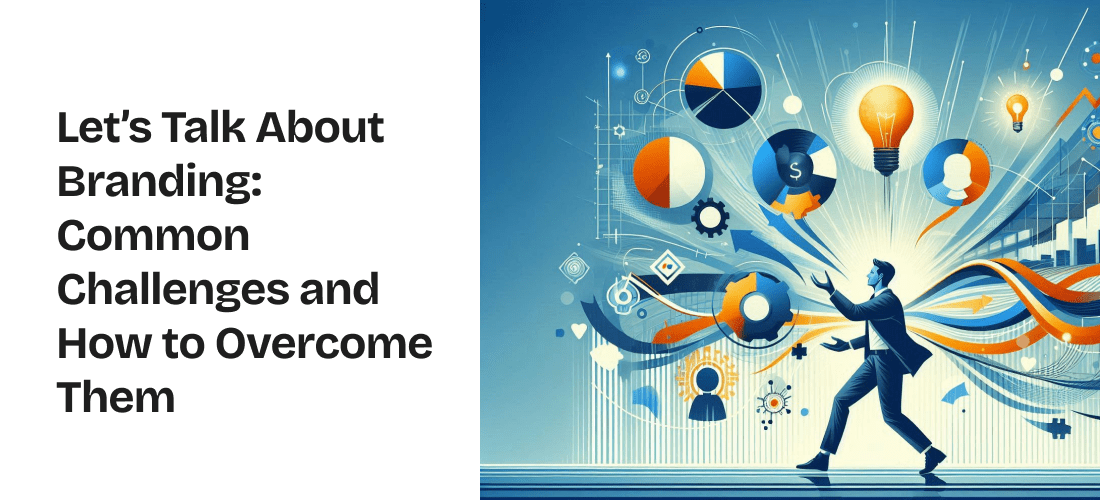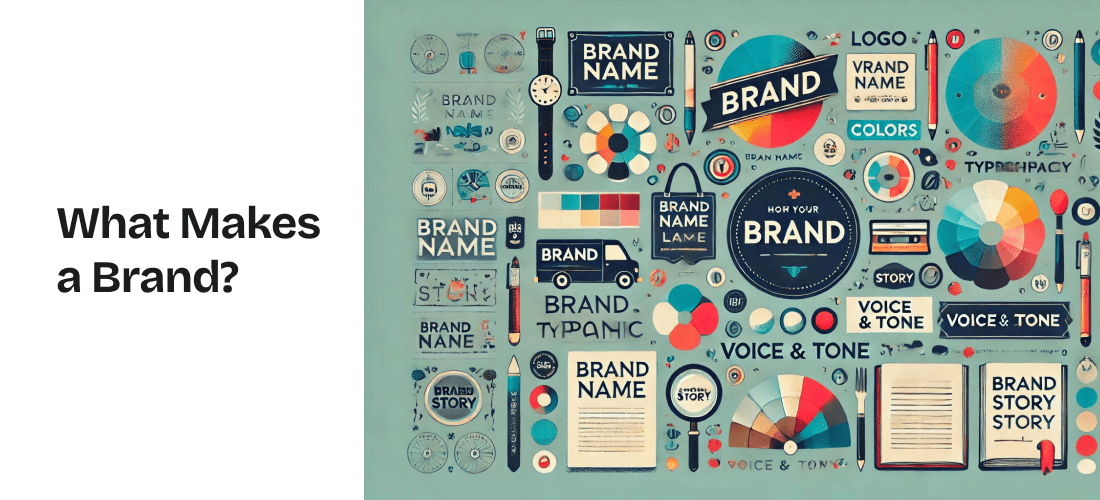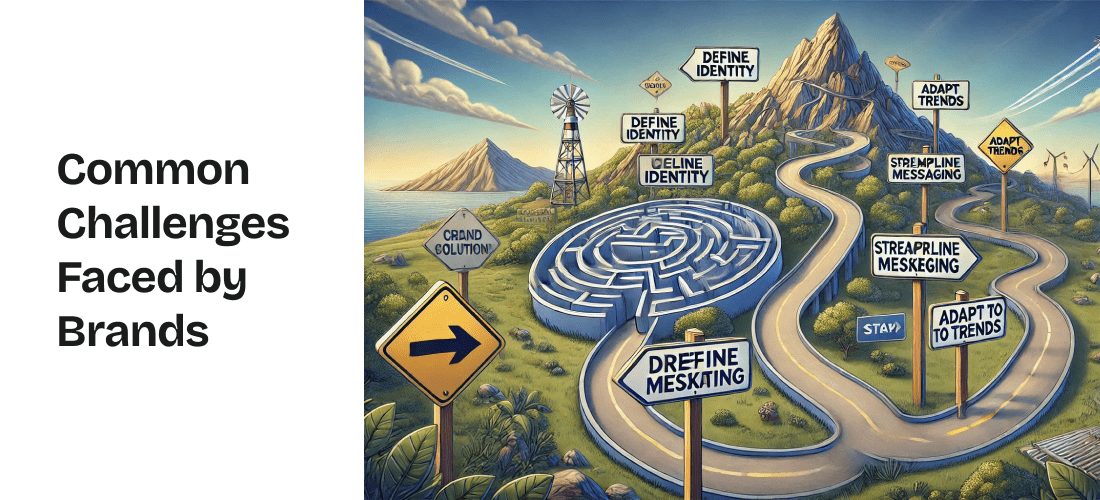


Dec 13, 2024

Building a brand can sometimes feel like chasing a moving target. Just when you think you’ve got it all figured out, something shifts—the market, customer preferences, or even your own business goals. It can get tricky with so many things happening at once. But here’s the good news: you’re not alone in this! Let’s dive into some common branding challenges and, more importantly, how you can tackle them head-on.

Before we dive into the challenges, let’s take a moment to understand what makes up a brand. A brand is more than just a name or a logo. It’s a combination of several elements that work together to create a unique identity in the minds of consumers. Here’s a breakdown of the key components:

Now that we’ve covered what makes a brand, let’s talk about some of the challenges brands commonly face. These are hurdles that every brand encounters at some point, but with the right approach, they can be overcome.
Ever feel like your brand is just another face in a crowded room? With so many businesses vying for attention, it’s easy to feel lost in the mix.
How to Handle It: So, what makes you unique? Think about it—what’s that one thing that sets you apart from the rest? Maybe it’s your exceptional customer service, a unique product feature, or the story behind your brand. Whatever it is, make sure it’s front and center in everything you do—whether it’s your marketing campaigns, your website, or how you interact with customers. When you highlight what makes you special, people will start to take notice.
Example: Consider Patagonia, the outdoor clothing brand. They’ve set themselves apart with a strong commitment to environmental sustainability. Their marketing campaigns and product designs emphasize their dedication to protecting the environment, and their “Worn Wear” programme encourages customers to repair and reuse their gear. This unique stance has garnered a loyal customer base that values sustainability, setting Patagonia apart from other outdoor brands.
We’ve all seen it—brands that seem to have multiple personalities. They look one way on social media, another on their website, and completely different in their emails. It’s confusing, isn’t it?
How to Handle It: Imagine your brand is a person. Now, this person should have a consistent look and sound, whether they’re at a party, at work, or just hanging out with friends. Creating a brand guide that covers your colours, fonts, and tone of voice can help with this. Make sure everyone on your team is on the same page. Consistency builds trust, and trust is the foundation of a strong brand.
Example: Coca-Cola excels in maintaining brand consistency. Their iconic red and white colour scheme, along with their classic cursive logo, is instantly recognisable across all platforms. Whether you see their ads on TV, their packaging in stores, or their social media posts, Coca-Cola’s visual and verbal branding remains uniform. This consistency helps reinforce their brand identity and ensures that customers immediately associate their experiences with Coca-Cola.
Trends come and go, and keeping up with them can feel like a full-time job. But how do you stay current without losing your brand’s identity?
How to Handle It: Stay informed and be open to change, but don’t feel pressured to follow every trend that pops up. Instead, focus on those that align with your brand’s values and resonate with your audience. Regularly review your branding to see if it still hits the mark. Sometimes, a small tweak is all you need to stay relevant without losing your core identity.
Example: Burberry has managed to stay relevant by adapting to trends while staying true to its heritage. They embraced digital transformation early on, leveraging social media and online platforms to engage with younger audiences. Their “Burberry Acoustic” series showcased new musical talent, blending modern trends with their traditional British elegance. This approach allowed them to stay current without compromising their classic brand identity.
Negative reviews or PR mishaps can be tough. It’s never fun to deal with bad press, but it happens to the best of us.
How to Handle It: The key is to address issues directly. Be transparent, apologise if needed, and take steps to fix the problem. Show your audience that you’re committed to making things right. Over time, positive interactions will help rebuild your reputation. Remember, honesty goes a long way, and people appreciate brands that own up to their mistakes.
Example: United Airlines faced a major PR crisis in 2017 when a passenger was forcibly removed from a flight. The initial response was widely criticised, but United later issued a sincere apology and implemented new policies to prevent similar incidents. Their efforts to address the issue head-on and improve customer service were crucial in rebuilding their reputation.
Measuring the success of your branding efforts isn’t always as straightforward as tracking sales. It can feel a bit like trying to catch smoke.
How to Handle It: Start by setting clear goals. What do you want to achieve—increased brand awareness, better customer loyalty, or improved brand perception? Use tools like surveys, social listening, and brand tracking to gather data. This will help you see what’s working and where you need to make adjustments. Branding is a long game, so be patient and focus on the bigger picture.
Example: Nike tracks brand success through various metrics, including brand loyalty, market share, and social media engagement. Their “Just Do It” campaigns are not just about selling products but about reinforcing their brand values. Nike uses consumer feedback and data analytics to continuously refine their strategies and ensure their branding efforts are resonating with their audience.
As your business grows, it’s tempting to slap your brand name on every new product or service. But beware—doing so can dilute your brand’s identity.
How to Handle It: Before you expand, ask yourself if the new offering aligns with your brand’s values and strengths. Does it make sense for your brand? Will it resonate with your audience? If the answer is yes, go for it! If not, it might be worth reconsidering. A thoughtful approach to brand extension will help you grow without losing sight of what makes your brand unique.
Example: Tesla is a great example of thoughtful brand extension. They started with electric cars and successfully built a strong brand around innovation and sustainability. When they ventured into energy solutions with products like solar panels and Powerwalls, they ensured that these new offerings aligned with their core values of clean energy and technological advancement. This approach allowed them to expand their brand without diluting its identity.
Curious about the difference between brand, brand identity, and branding? We’ve got just the thing for you! Check out our blog on Brand, Brand Identity, and Branding to get a clearer understanding.
Branding can be challenging, but it’s worth the effort. By staying true to what makes your brand unique, being consistent, and adapting when necessary, you can overcome these common challenges. Remember, your brand is a reflection of your business—make sure it’s one you’re proud of!
And speaking of making your brand something to be proud of, that’s where Red Baton comes in. We’re not just another branding agency—we’re your partners in crafting a brand that not only stands out but also resonates deeply with your audience.
Our Brand Experience service is all about creating impactful strategies that turn your brand from being seen to being remembered. We’re passionate about blending data-driven insights with creative brilliance to design brands that truly connect.
Take Yulu, for instance. They came to us needing a branding overhaul that would capture the essence of their urban, tech-savvy audience. We didn’t just give them a new look; we redefined their entire brand experience, leading to a significant boost in app installs and user engagement. That’s the kind of transformative impact we strive for with every client.
Reach out to us today!
We’re here to help you make your brand unforgettable.